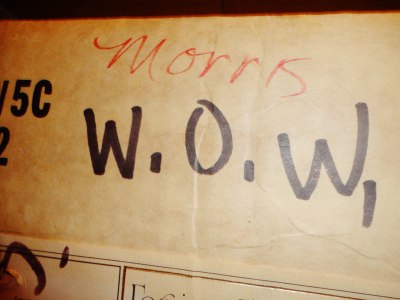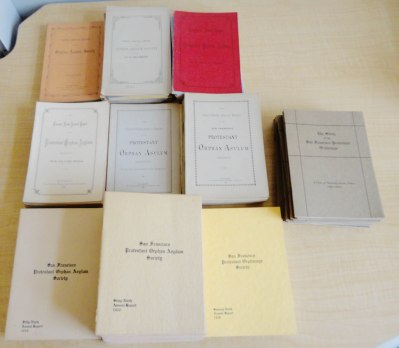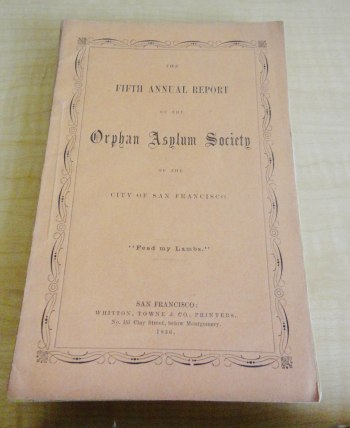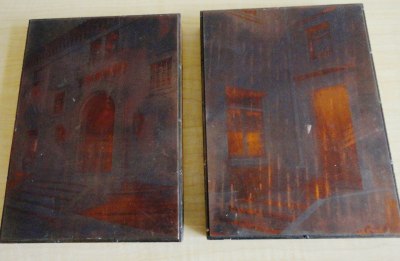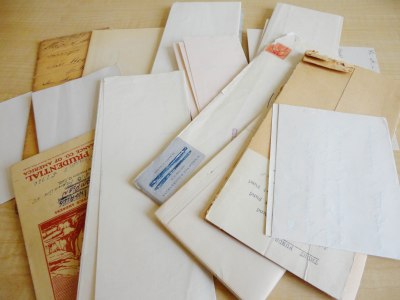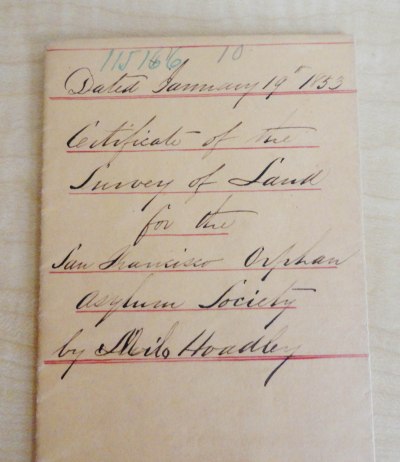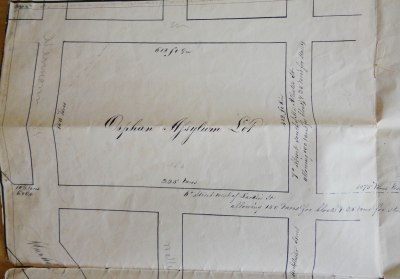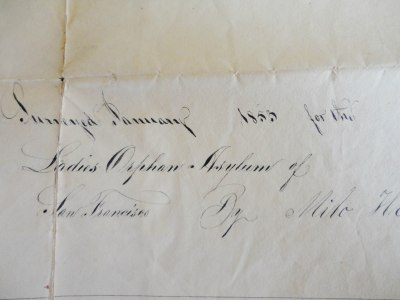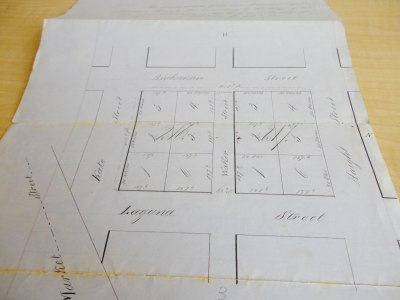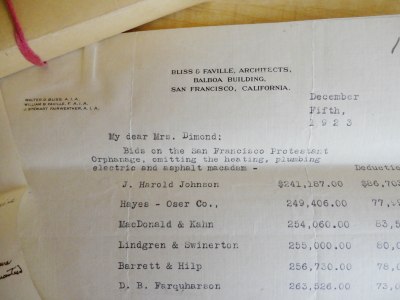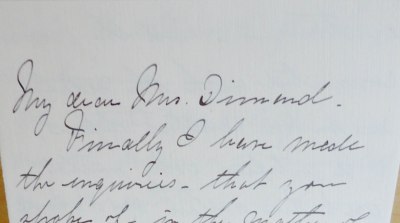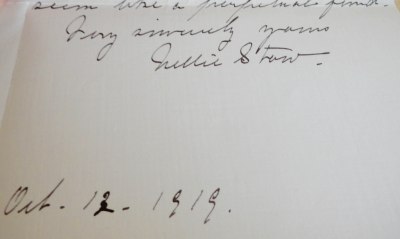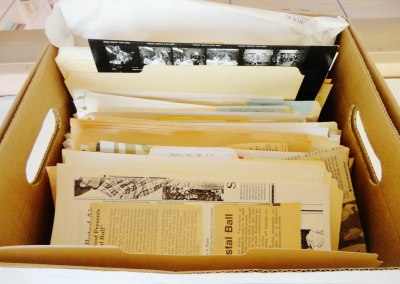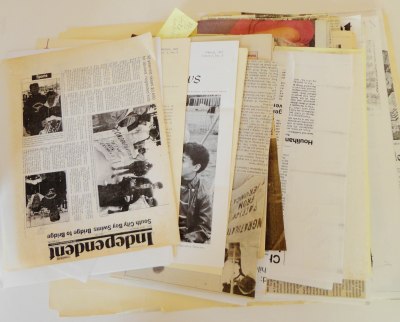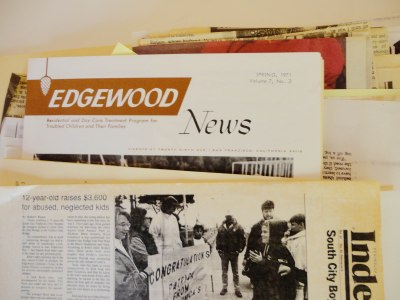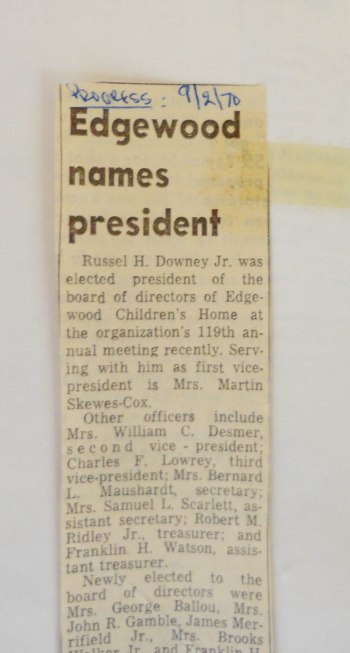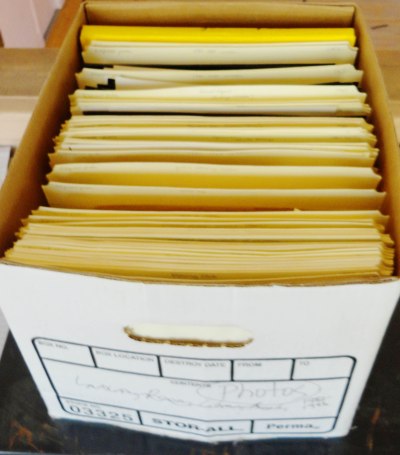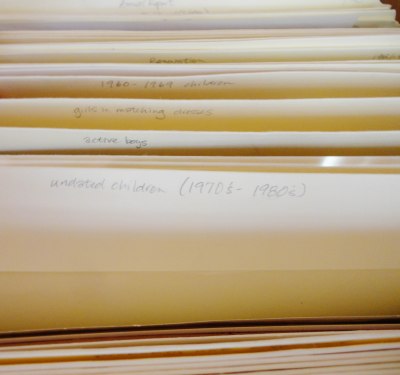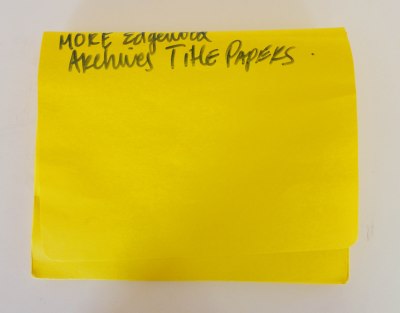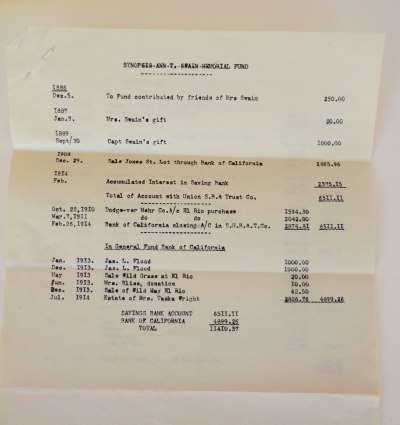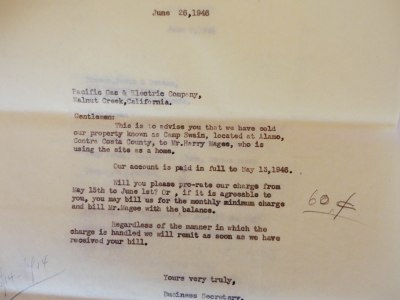My search of the vault uncovered many other items from the 1800s through the 1930s, not just orphan records.
This box marked “Morris” was stored in between boxes of medical files. Morris Kilgore was a former CEO of the organization, so it caught my eye.
To my surprise, the box contained copies of nearly every single annual report for the San Francisco Protestant Orphan Asylum and Edgewood from 1856 through 1931. Even more surprising is that despite covering such a span of time, only a handful of years are missing. I was very excited to have found these as they have a lot of great information about the early administration and donors to the orphanage.
Here they are, piled up by decade. Most years they used very neutral colors, but as you can see, there is a bright red edition. What is fun is that some years, there are annual reports printed in more than one color for some reason.
These are pretty short, so I’m going to try to digitize all of these.
I found two more engraved copper plates. The one of the left is the front door of the administration building and the one on the right is a side door.
And I found piles of land records, deeds, and other property-related documents. These were much older than the deeds I previously found in the balcony.
The oldest record was a deed from 1853 and describes the location as being from the Yerba Buena Cemetery to Larkin Stret to McAllister Street. I’m somewhat confused by what this property describes, because that’s across the street from the current City Hall and from what I can tell, the orphanage was never located there. In 1853, they were supposedly located in Pleasant Valley, a neighborhood that no longer exists but was about 2 miles to the east. But, there isn’t a lot of information about where exactly Pleasant Valley was, so maybe it was the current Civic Center area and not the current South of Market area, which is what I had thought. Another thing to add to the research list!
Here’s a map drawn in 1853 of the Haight Street location, where the orphanage moved in 1854. I don’t think the 1853 deed is for this location since they were created in the same year and the street names are radically different (and the deed names streets that are a mile to the east of the ones on this map).
Here’s another map of the Haight Street location. Kate Street (on the left) is now Hermann Street, but the others are the same.
And this is a map of the current location, on Vicente Street in the Parkside neighborhood. The lot was about two acres larger than it is today.
I was happy to find this letter. Even though it’s just a list of construction bids, it’s the only record I’ve found from the architects of the current location. It’s also addressed to Mrs. Dimond, a prominent figure at the organization at the time.
I also found this note from longtime Edgewood secretary Nellie Stow to Mrs. Dimond. Two of Edgewood’s residential cottages were named after these ladies because the children adored them so much. I have found a couple of other items signed by Miss Stow, but haven’t found any other correspondence between herself and other managers of the institution.
I was thankfully able to finish searching the vault in just a day and will now move on to looking around the rest of the building and organizing the items into series so I can start to build an inventory.
